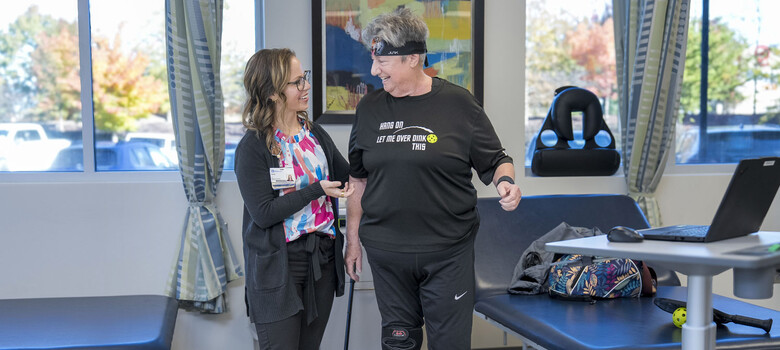 From the DukeHealth.org archives. Content may be out of date.
From the DukeHealth.org archives. Content may be out of date.
Treating Heart Rhythms with Innovative Technology

Abnormal heart rhythms, or arrhythmias, can lead to heart failure if left untreated. Duke heart rhythm specialists use minimally invasive techniques and cutting-edge technology to give Kimberly Rogers a normal heartbeat, and a new outlook on life.
Waking up after a heart procedure is not a moment you expect to feel good. But Kimberly Rogers did. “The moment I woke up I could tell I was better,” she says. “I could breathe easier.”
Rogers had been suffering the effects of a weak heart, but assumed the symptoms were due to her weight. “I was out of breath all the time, and I attributed that to being a little overweight,” she says. “But that didn’t have anything to do with it. It was my heart.” More specifically, it was her heart’s rhythm. Rogers’ heart had an extra, abnormal beat.
Over time, abnormal heart rhythms can lead to other problems; eventually, Rogers was diagnosed with heart failure. She was referred to heart rhythm specialist James Daubert, MD, at the Duke Heart Center.
“Kimberly’s heart muscle had stretched and thinned,” says Daubert. “When this happens, the heart can’t pump well. Over time, this can cause heart failure, and that’s what happened in Kimberly’s case.”
Daubert and his team, using cutting edge technology, were able to pinpoint precisely where the extra beat in Rogers’ heart originated. The cells causing the problem were ablated —removed. The team used a minimally invasive technique, threading a catheter from a vein in the groin to the heart.
Rogers spent one night in the hospital and recovered at home for a week. She continues to receive treatment for her heart failure, though correcting the abnormal heart rhythm with ablation improved her heart failure substantially. She now has not only a new, normal heartbeat, but a new outlook.



